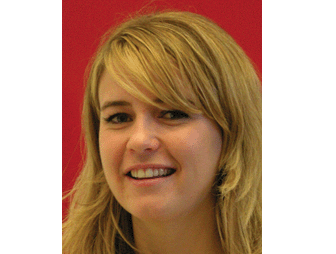 |
| Kimbrely Matsoukas |
|
By Kimbrely Matsoukas
Sustainability Manager, Bentley Prince StreetThere’s a lot of talk these days about environmental product standards. In the summer issue of Green Operations, I described the various types of environmental claims and standards in the marketplace today.
The confusion surrounding environmental claims generally arises from two sources: the number of environmental product standards on the market today and the lack of transparent information with respect to environmental impacts contained within those standards. With respect to the first source, because of the different development processes of environmental product standards, it is not possible to compare the products certified to those standards.
For example, one cannot compare a product certified to the Canadian Ecologo standard with a product certified to the NSF-140 Sustainability Assessment for Carpet. This is because these standards measure different attributes, and points are assigned for various levels of attainment. In the case of NSF-140, the points awarded are determined by the Joint Committee of stakeholders who develop and maintain the standard. Ecologo standard requirements are also developed by a stakeholder committee, but each stakeholder group comes to a different consensus about what makes a product “sustainable.” These differences of opinion are reflected in different environmental product standards, making comparison between products certified to two different standards impossible.
Even two products certified to the same standard cannot be compared. This is because most environmental product standards are based on a variety of product attributes. They do not measure the actual environmental impact of products. Products can also meet the standard requirements using different point pathways. For example, two LEED buildings may be certified at the Platinum level, but one could not say with certainty which project has a lower environmental footprint, as each project most likely met a different set of criteria to earn certification.
Furthermore, multi-attribute standards like LEED and NSF-140 do not directly measure the environmental impact of a building or product. Attaining a certain environmental attribute does not guarantee a lower environmental footprint. For example, the fact that a product contains a certain level of rapidly renewable content may help earn it points toward an environmental certification, but there’s no way to know whether the rapidly renewable content lowers the product’s contribution to climate change, air or water pollution when compared with similar products. This is similar to a health-conscious consumer having to make a decision about whether a certain brand of bread will fit within his or her diet based on the claim it contains 5% wheat flour.
Many building industry professionals are tired of being confused and as a result are calling on manufacturers to standardize environmental claims. Currently, the only standardized environmental label that allows for easy comparability between products is an Environmental Product Declaration (EPD), which is based on life cycle assessment (LCA) and provides unprecedented disclosure with respect to the environmental impact of products. Namely, they disclose: the product ingredients, the energy and material resources used to make the product, and the life cycle environmental impacts of the product. EPDs satisfy the industry’s craving for comparability presented in a standardized and user-friendly way. This is because all EPDs within a given product category must adhere to certain rules in measuring and reporting the data contained within the EPD. Additionally, EPDs must be verified by a third party. As a result, a purchaser or specifier doesn’t have to be an expert in green product claims and labels to finally answer with confidence which product is “greener” based on the goals of the project.